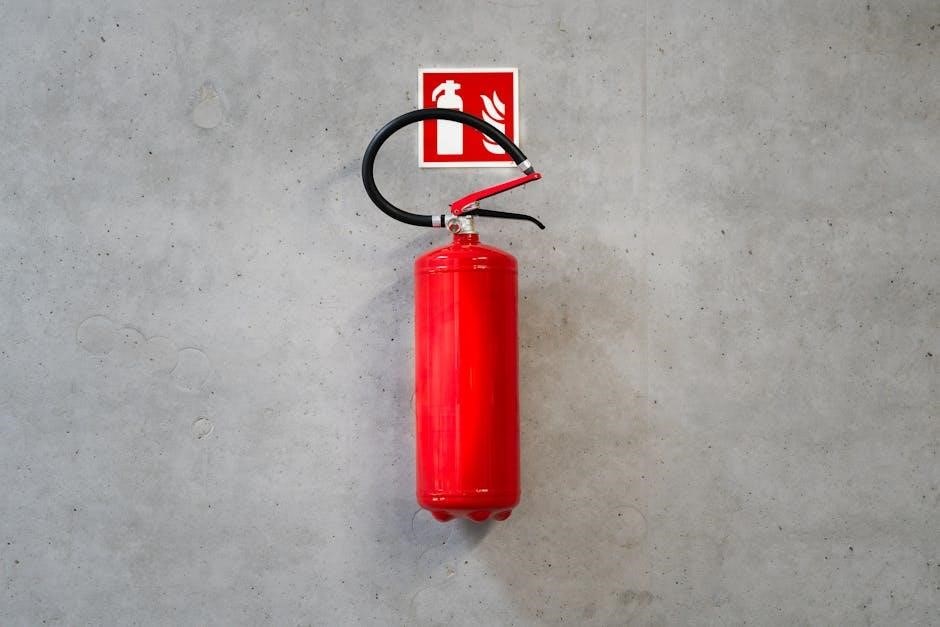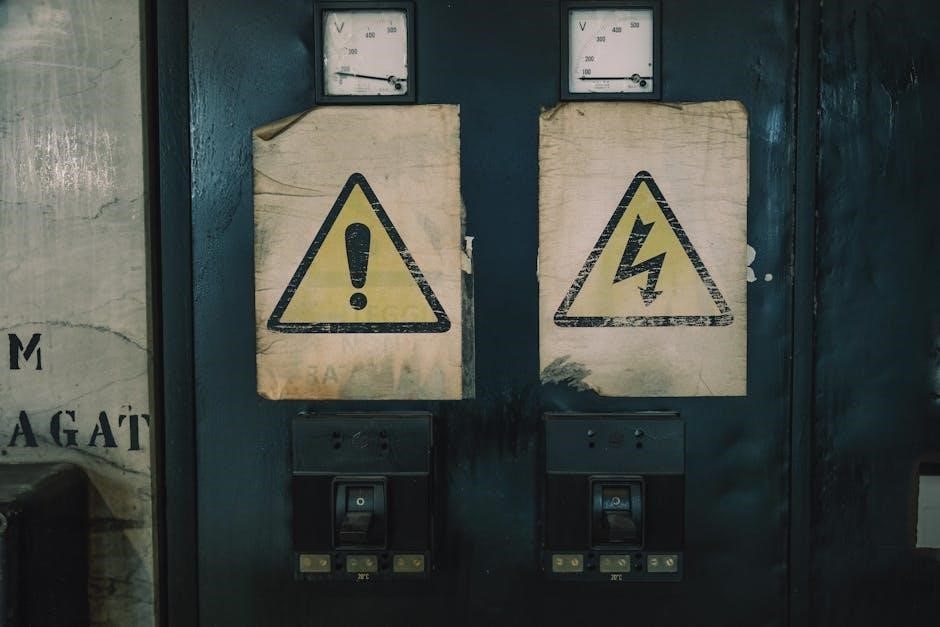The manual provides essential information for users of the Carbon Monoxide Alarm First Alert, including installation and operation guidelines, to ensure safe and effective use of the device always.
Purpose of the Manual
The purpose of the manual is to provide users with a comprehensive guide to understanding and using their Carbon Monoxide Alarm First Alert, including its features and operation. The manual is designed to help users make the most of their product, from setup to maintenance and beyond. It contains important information about the alarm’s operation, safety guidelines, and troubleshooting tips. The manual is intended for users who have purchased the Carbon Monoxide Alarm First Alert and want to ensure they are using it correctly and safely. By reading the manual, users can gain a better understanding of how the alarm works and how to respond in case of an emergency. The manual is an essential resource for anyone who wants to get the most out of their Carbon Monoxide Alarm First Alert and stay safe from the dangers of carbon monoxide poisoning. It is a valuable tool for homeowners, renters, and anyone who wants to protect themselves and their loved ones from this silent killer.
Importance of the Manual
The manual is a crucial component of the Carbon Monoxide Alarm First Alert, as it provides users with the knowledge and information they need to install, operate, and maintain the device correctly. The manual is important because it helps users to understand the alarm’s features and functions, as well as its limitations and potential hazards. By reading the manual, users can ensure that they are using the alarm in a way that is safe and effective. The manual also provides important safety information and guidelines, which can help to prevent accidents and injuries. Additionally, the manual can help users to troubleshoot problems and resolve issues with the alarm, which can help to minimize downtime and ensure that the device is always functioning properly. Overall, the manual is an essential resource for anyone who wants to get the most out of their Carbon Monoxide Alarm First Alert and stay safe from the dangers of carbon monoxide poisoning.

Understanding the First Alert Carbon Monoxide Alarm
Key Features of the Alarm
The First Alert Carbon Monoxide Alarm has several key features that make it an essential device for home safety, including a loud alarm sound and a digital display of carbon monoxide levels.
The alarm is designed to be easy to install and use, with a simple plug-in design and a test button to ensure it is working properly.
The device also has a memory feature that recalls the highest level of carbon monoxide detected, allowing users to track changes in carbon monoxide levels over time.
Additionally, the alarm has a low battery warning and a end-of-life warning, to ensure that users are aware when the device needs to be replaced.
The First Alert Carbon Monoxide Alarm is also certified by reputable testing organizations, ensuring that it meets strict safety standards.
Overall, the key features of the First Alert Carbon Monoxide Alarm make it a reliable and effective device for detecting carbon monoxide and protecting users from its dangers.
With its advanced features and easy-to-use design, the alarm is an important addition to any home safety system.
The alarm is designed to provide users with peace of mind, knowing that they are protected from the dangers of carbon monoxide.
The device is also affordable and widely available, making it accessible to a wide range of users.
The First Alert Carbon Monoxide Alarm is a valuable investment for anyone looking to protect their home and family from the dangers of carbon monoxide.
How the Alarm Works

The First Alert Carbon Monoxide Alarm works by detecting the presence of carbon monoxide in the air and sounding an alarm when levels become elevated.
The alarm uses a sophisticated sensor to detect carbon monoxide, which is a colorless, odorless, and tasteless gas that can be deadly in high concentrations.
When the sensor detects carbon monoxide, it sends a signal to the alarm’s microprocessor, which triggers the alarm sound and activates the digital display.
The alarm’s sensor is designed to detect carbon monoxide from any source, including fuel-burning appliances, generators, and vehicles.
The alarm’s microprocessor is also designed to distinguish between carbon monoxide and other gases, ensuring that the alarm only sounds when carbon monoxide is present.
The alarm’s electronic circuitry is designed to provide reliable and consistent performance, and the device is powered by a battery or plug-in power source.
The alarm’s operation is automatic, and it requires no manual intervention to detect carbon monoxide and sound the alarm.
The alarm is designed to provide users with early warning of a potential carbon monoxide hazard, allowing them to take action to protect themselves and their loved ones.
The alarm’s detection capabilities are designed to meet or exceed industry standards for carbon monoxide detection.
The alarm is an important safety device that can help prevent carbon monoxide poisoning and save lives.

Installation and Maintenance of the Alarm
Proper installation and regular maintenance are crucial for the alarm to function correctly and ensure user safety always with correct placement.
Installation Guidelines
To ensure proper installation of the Carbon Monoxide Alarm, follow the manufacturer’s instructions carefully. The alarm should be placed on every level of the home and near sleeping areas. It is also important to choose a location that is at least 5 feet away from fuel-burning appliances and 10 feet away from cooking appliances. The alarm should be installed at least 5 feet from the floor to prevent it from being damaged by moisture. It is also recommended to install the alarm near the garage if the garage is attached to the home. By following these guidelines, you can ensure that the alarm is installed correctly and will function properly in the event of a carbon monoxide emergency. The installation process is relatively simple and can be completed by the homeowner, but if you are not comfortable with the installation, it is recommended to hire a professional. The alarm comes with a user manual that provides step-by-step instructions for installation.
Maintenance Requirements
The Carbon Monoxide Alarm requires regular maintenance to ensure it continues to function properly. The alarm should be tested monthly by pressing the test button to verify it is working correctly. Additionally, the alarm should be cleaned regularly to prevent dust and debris from accumulating on the sensor. The user manual provides instructions on how to clean the alarm and replace the battery; It is also important to replace the alarm every 5-7 years or as recommended by the manufacturer. The alarm will also provide an end-of-life signal when it needs to be replaced. By following these maintenance requirements, you can ensure the alarm continues to provide reliable protection against carbon monoxide. Regular maintenance is crucial to ensure the alarm functions properly and provides early warning in the event of a carbon monoxide emergency. The user manual provides a maintenance schedule to help you stay on track.

Safety Precautions and Warnings
Follow safety guidelines to avoid injury, read manual carefully always.
Never Ignore the Alarm
The Carbon Monoxide Alarm First Alert manual emphasizes the importance of never ignoring the alarm. If the alarm sounds, it indicates a potential carbon monoxide leak, which can be life-threatening. Users should immediately evacuate the premises and contact emergency services or a qualified professional to investigate and resolve the issue. The manual provides guidance on what to do if the alarm sounds, including steps to take to ensure safety and prevent harm. It is crucial to take all alarms seriously and respond promptly to ensure the well-being of occupants. By following the manual’s instructions and taking appropriate action, users can minimize the risks associated with carbon monoxide exposure. The alarm is designed to provide early warning, and ignoring it can have severe consequences, including injury or death. Therefore, it is essential to always prioritize safety and respond to the alarm promptly. Regularly reviewing the manual can help users understand the alarm’s operation and response procedures.
Understanding the Alarm Sounds
The Carbon Monoxide Alarm First Alert manual explains the different sounds the alarm can make, helping users understand their meaning and respond accordingly. The alarm sounds can indicate a variety of situations, including low battery, malfunction, or detection of carbon monoxide. Users should familiarize themselves with the different sounds to ensure they can respond quickly and effectively in case of an emergency. The manual provides a detailed description of each sound, allowing users to distinguish between them and take the necessary actions. By understanding the alarm sounds, users can minimize the risk of injury or death from carbon monoxide exposure. The manual also offers guidance on how to silence the alarm and troubleshoot any issues that may arise. Regular review of the manual can help users stay informed and prepared to respond to the alarm sounds, ensuring their safety and the safety of others. This knowledge is essential for safe and effective use of the alarm.
The Carbon Monoxide Alarm First Alert manual is a valuable resource for users, providing essential information on the safe and effective use of the alarm. By following the guidelines and instructions outlined in the manual, users can minimize the risk of injury or death from carbon monoxide exposure. The manual’s clear and concise language makes it easy to understand and navigate, even for those who are not familiar with carbon monoxide alarms. Overall, the manual is a comprehensive guide that covers all aspects of the alarm’s operation, from installation to maintenance and troubleshooting. It is an indispensable tool for anyone who wants to ensure their safety and the safety of others. The manual’s importance cannot be overstated, and it is recommended that all users read and follow its instructions carefully to get the most out of their Carbon Monoxide Alarm First Alert. This will help to prevent accidents and ensure a safe environment.


